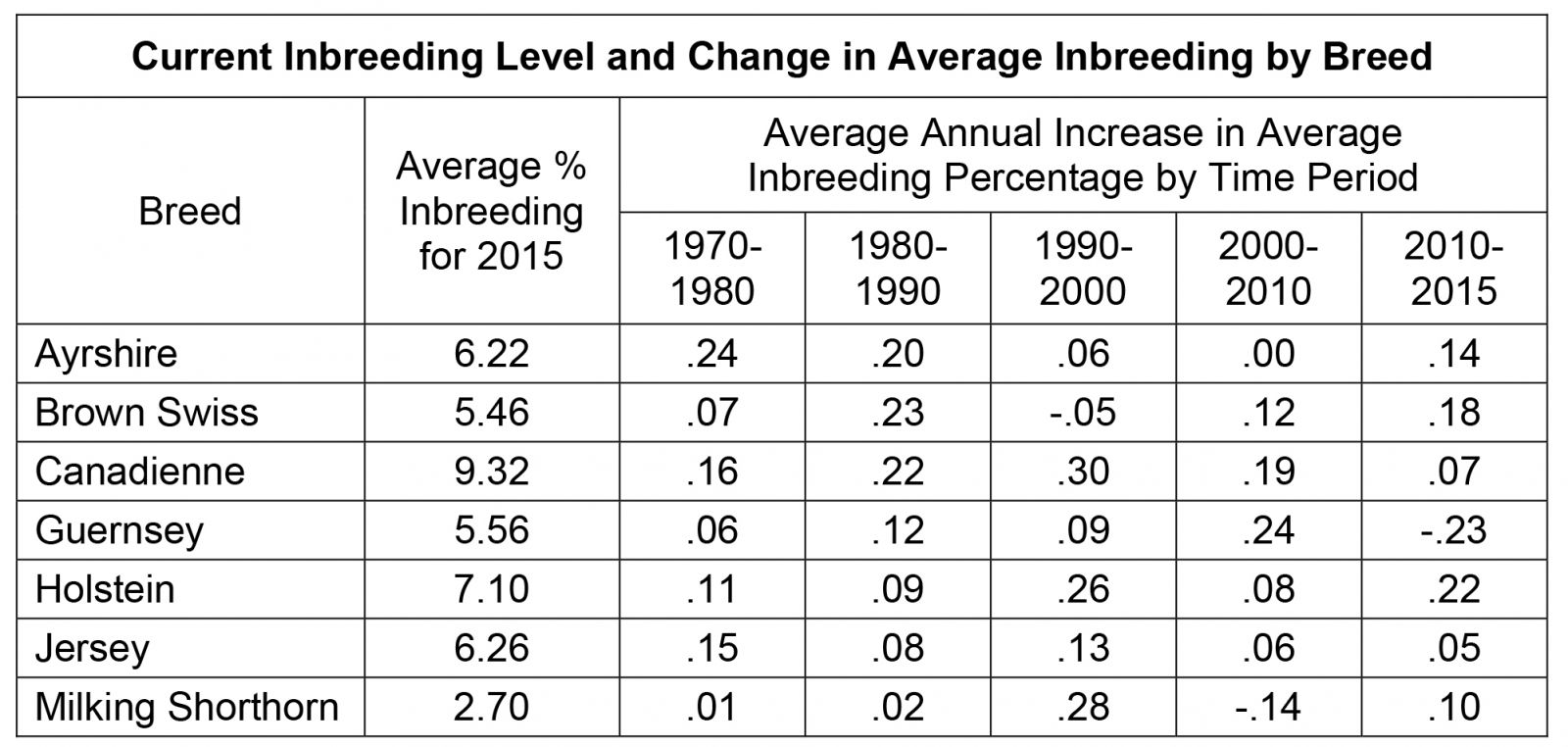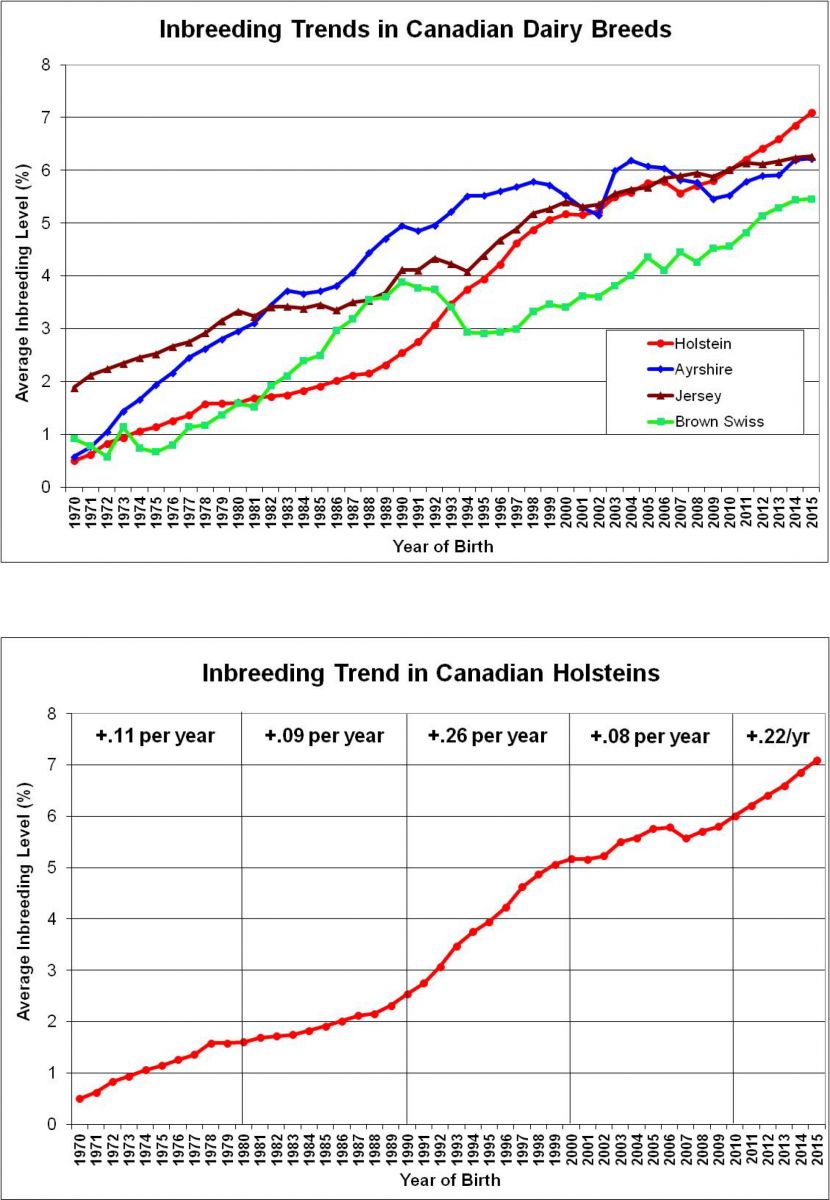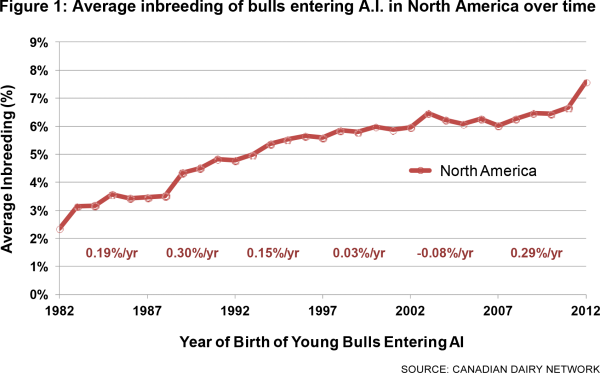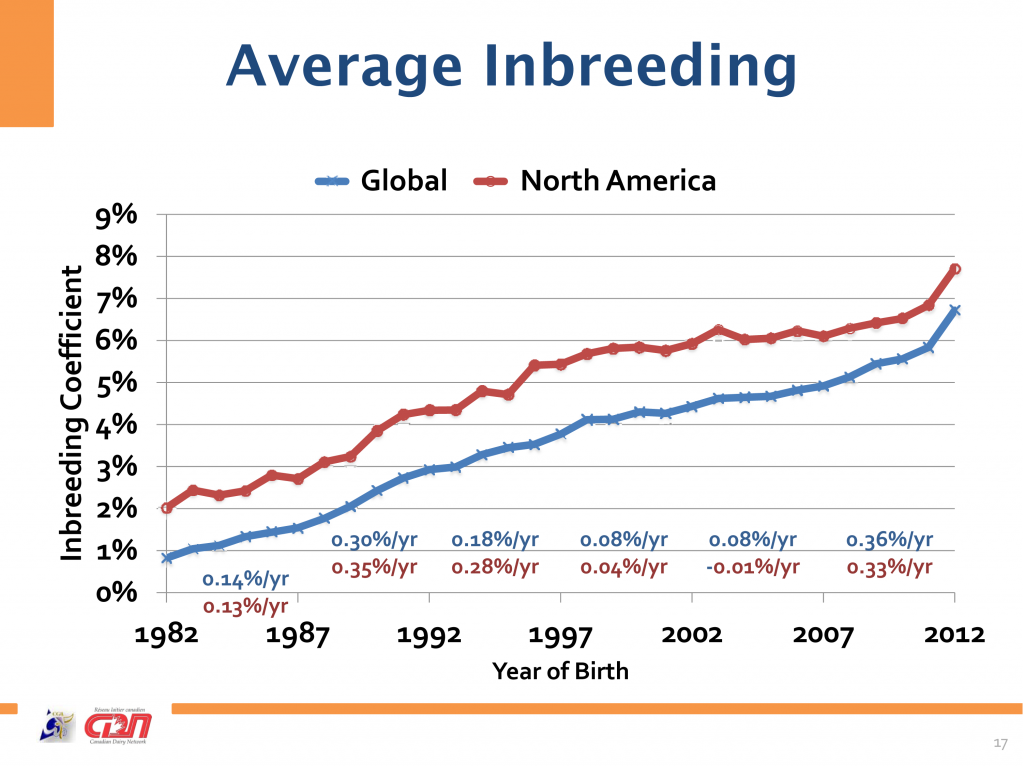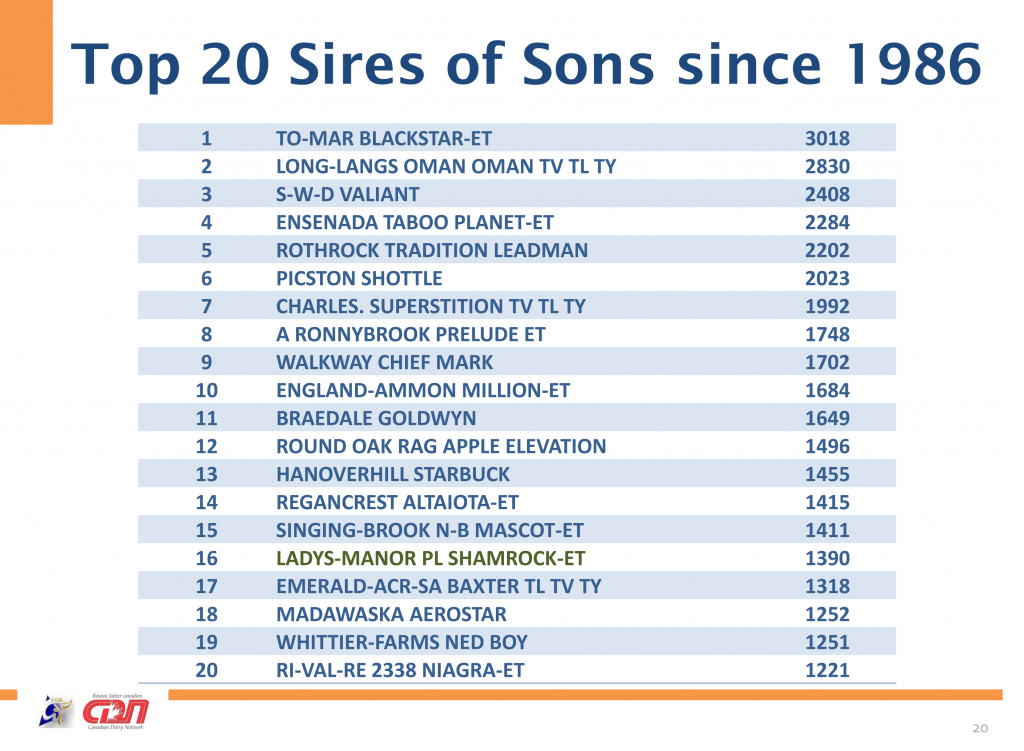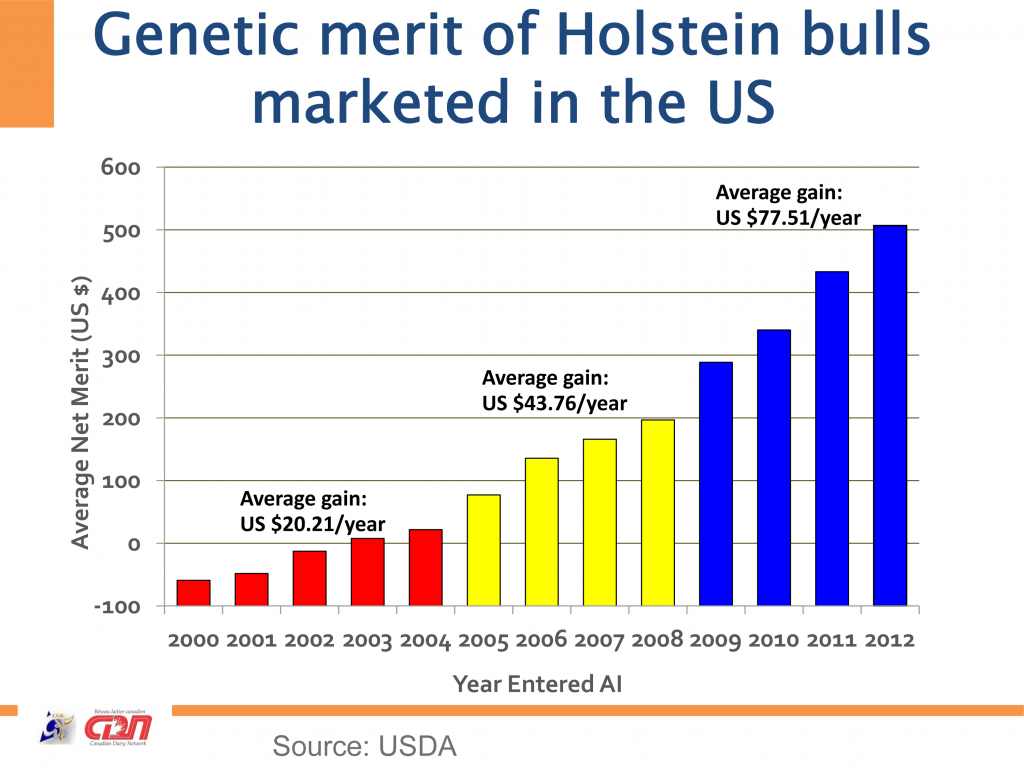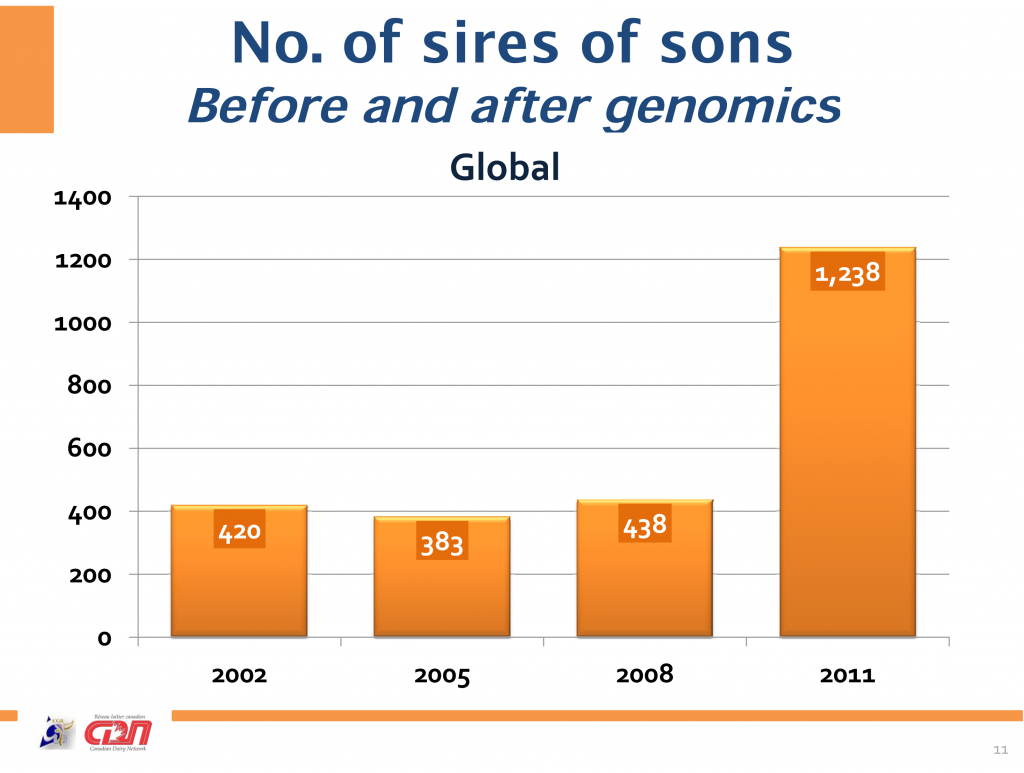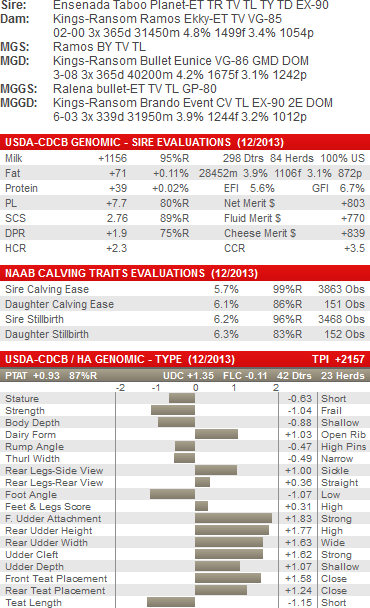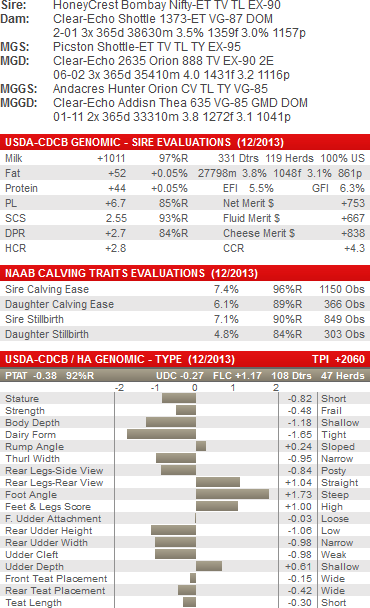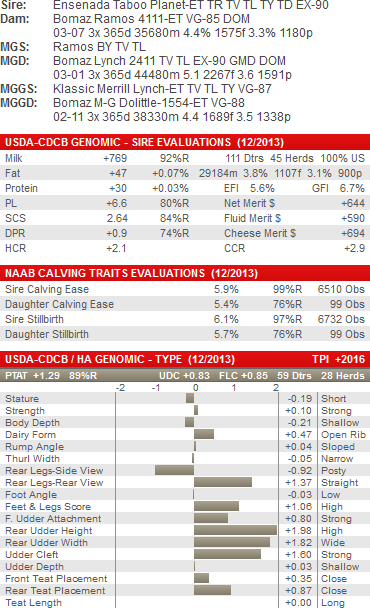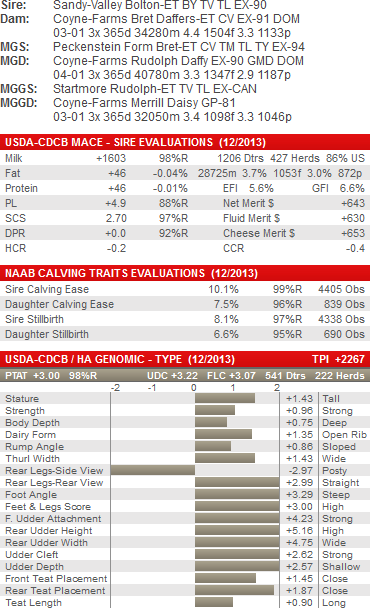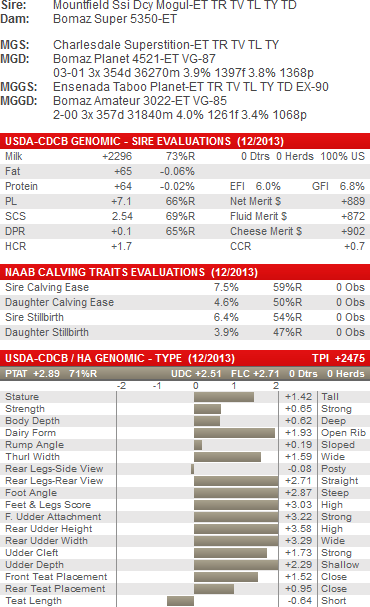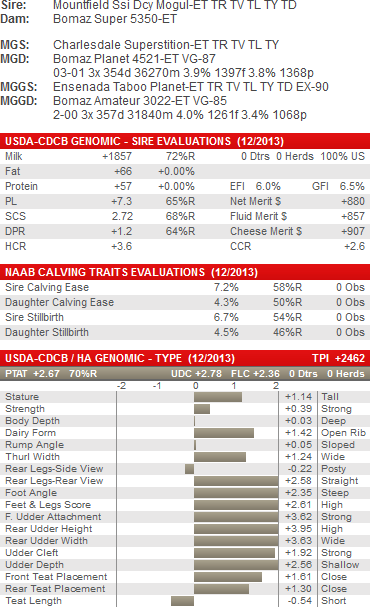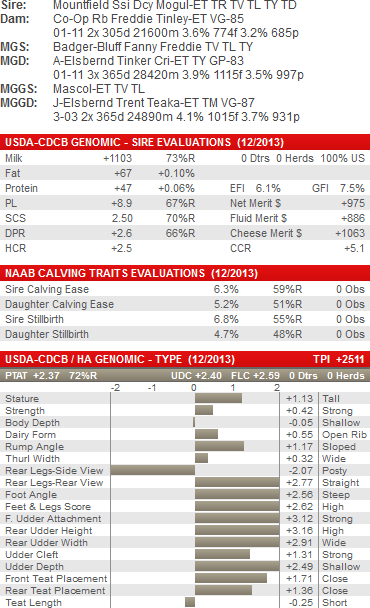Much has been written and talked about in the global dairy cattle breeding industry on the need to avoid inbreeding. The focus has been on the negatives resulting from mating related animals. These negatives can include reduced fertility and lower disease resistance. In cows, this may mean health issues and thereby reduced profitability. For calves, it can be both health and livability issues.
Breeders are focused on genetic advancement and using the very best sires. In the last decade, two things have raised the attention paid to inbreeding and its possible negative effects. First is the extensive use of genomically evaluated related animals, which eliminated lower ranked unrelated animals as breeding parents. Secondly, which is a result of the first, is the much more rapid turning over of generations. All this has led to breeders often searching sire listings for lower ranked ‘outcross’ sires to avoid the negatives.
Let’s review inbreeding in dairy cattle and look at the possibilities for the future when mating related animals.
A Quick Review
Definition:
Inbreeding is the mating of related animals. In dairy cattle, this can be mating half-brother and half-sister and often as close as first or second cousins matings.
Current Inbreeding Levels:
In US Holsteins: (1) Four of the top five proven TPI sires all have the sire stack Mogul x Robust x Planet; (2) Fifteen of the top twenty-five proven TPI sires are sons of Mogul; (3) Proven TPI sires #1, #3 and #5 are Mogul sons out of Miss OCD Robst Delicious; (4) Delicious also has a Cashcoin son at #11 TPI; (5) Of the top twenty-five proven NM$ sires ten are Mogul sons, and eight are Supersire sons; and (6) So Mogul and Robust are close-up in the pedigree of 72% of the top proven NM$ sires.
In Jerseys, one sire does not dominate, but Implus, Berretta, and Duncan Belle breeding appear in many proven North American Jersey sires (Read more – Jersey Sire Usage: What Bulls Are Breeders Actually Using).
Inbreeding levels are increasing in North America in all breeds.
Table 1 – Inbreeding %’s – US Dairy Breeds – 1967-2017*
| Year | Ayrshire | Brown Swiss | Guernsey | Holstein | Jersey |
| 1967 | 0.46 | 0.46 | 0.53 | 0.69 | 0.29 |
| 1977 | 2.49 | 1.02 | 1.26 | 1.31 | 1.58 |
| 1987 | 4.02 | 2.24 | 2.79 | 2.56 | 3.01 |
| 1997 | 5.18 | 3.72 | 4.76 | 5.31 | 4.09 |
| 2007 | 5.76 | 5.43 | 6.24 | 6.77 | 5.56 |
| 2017 | 6.81 | 6.88 | 7.63 | 7.78 | 7.16 |
* Source: CDCB Files. Based on 1960 being 0% Inbreeding.
Table 2 – Inbreeding Level and Change in Average Inbreeding by Canadian Dairy Breeds*
| Avg % Inbred -2016 | Avg Annual Increase in % Inbred | |||||
| Breed | 1970-1980 | 1980-1990 | 1990-2000 | 2000-2010 | 2010-2016 | |
| Ayrshire | 6.43 | 0.24 | 0.2 | 0.06 | 0 | 0.15 |
| BrownSwiss | 6.96 | 0.07 | 0.26 | 0.12 | 0.12 | 0.08 |
| Canadienne | 9.71 | 0.16 | 0.22 | 0.3 | 0.19 | 0.13 |
| Guernsey | 6.45 | 0.06 | 0.12 | 0.15 | 0.22 | -0.1 |
| Holstein | 7.34 | 0.11 | 0.09 | 0.26 | 0.08 | 0.22 |
| Jersey | 6.36 | 0.15 | 0.08 | 0.13 | 0.06 | 0.06 |
| Shorthorn | 2.54 | 0.01 | 0.02 | 0.28 | -0.14 | 0.06 |
* Source: CDN Files. Based on Females Born in Canada since 1970.
The increase is 1 to 2 % every ten years.
Once not a Concern:
Before breeder co-ops providing artificial insemination service (approximately 1940), inbreeding was not a matter that garnered much attention. But A.I. was followed by frozen semen, genetic index based young sire sampling programs, E.T., IVF, semen sexing and genomic indexing. All of these contributed to narrowed breed gene pools in the current dairy cattle populations, especially in North America. However, on a global basis, a broad pool of genes in dairy animals still exists in the form of frozen semen and embryos. It should be noted that it is not just the introduction of genomic, genetic evaluations that can be centered out for increasing the levels of inbreeding.
It is All About Looking Forward Not Backwards:
Breeders can find individual animal inbreeding coefficients (%INB) readily available on-line at breeds, GE centers and A.I. companies based on pedigree, aka looking backwards. But when making a mating, it is all about the inbreeding coefficient of the resulting progeny, aka looking forward. Modern mating programs take into consideration the inbreeding level of the resulting progeny when making sire recommendations.
Other Details:
Seven points of interest relative to inbreeding include:
- Linebreeding is based on making matings tracing back to a specific common animal and is a form of inbreeding. It has been used for generations by breeders to stamp good genes into a herd. However, it also can stamp in the not so good genes that the common ancestor may have.
- The published inbreeding coefficients for animals can be one of the following: (a) pedigree-based (%INB); (b) future based that considers animals in the population in the future (EFI); and (c) genomic (gene) based that starts with EFI and adds in the DNA makeup of an animal. The latter one will become more commonly used in the future.
- The breeding families used to produce North American Holsteins A.I. sires over the past fifty years had superior production and type but were too often inferior for fertility traits including calving ease. As a result, the concentration of the breeding lines, by the 2000’s, resulted in major breed problems for inbreeding and infertility in milking cows. Cows that do not retain body condition score after calving often crash when it comes to conceiving when bred.
- Conversely, until this decade, in Jerseys, the cow families used had very good fertility and even though inbreeding increased the fertility did not suffer, at least as much as it did in Holsteins.
- To overcome the negatives of inbreeding, some breeders either: (a) alternated sires from diverse families that they used in their herds; or (b) used sires from other breeds. The latter group of breeders were more concerned about the effects of inbreeding than they were on maintaining breed purity. However, a large proportion of breeders were not concerned about inbreeding, and so they mated related animals.
- A high percent of females are not genomically evaluated, and as a result, it is not possible for mating programs to factor in genomic information on inbreeding when making mating recommendations.
- I. companies are now either not entering into a stud or openly reporting sires that are known to be carriers of a group of haploids, often associated with embryonic death or lower fertility. Breeders are protected from some of the negatives associated with inbreeding.
Planning for Positive Outcomes from Inbreeding
Improving a population so that only the most desired genotype occurs is something dairy cattle breeders aim to do for all traits under selection. Both constructive breeding and inbreeding can be used to achieve that end. When a single locus is involved in expressing a trait, the goal is to have both loci on the two-gene pair be identical (homozygous).
Some homozygous and desired genotype examples readily known to breeders include: PP polled; BB kappa casein for increased cheese yield; A2A2 beta casein thought to improve milk digestion by humans and bb red coat color (where BB and Bb are black).
For over a century corn breeders have inbred lines and then crossed the inbred lines to produce the superior corn we have today. The same applies to poultry breeding. Inbreeding is the foundation of their programs.
Of interest to dairy cattle, breeders will be the fact that it has been recently determined that the DGAT1 gene is a major determinant of milk fat percent (DGAT = diglyceride acyltransferase). And in addition to fat percent, in a 2007 study by A Schennink and Associates found that DGAT1 gene accounted for about half of the fat composition attributed to genetic variation that was present in the animals they studied. In humans, DGAT1 is important in triglyceride synthesis and essential for intestinal absorption. Having animals homozygous for DGAT may be one way to increase the rate of genetic advancement for both fat percent and yield.
Just think about what breeders can expect to learn in the next five to ten years on the effect of genes. Inbreeding can be one tool to fix the desired genes in a population and eliminate the undesired gene. If that is the case, there would be no need to insert certain genes or to edit genes, both of which may not pass the consumer acceptance test. Simply use inbreeding to get the job done.
Canadian Research into Inbreeding
Dr. Christine Baes, named in 2017 as the Semex-CDN-Holstein Canada Professor in Dairy Genomics at the University of Guelph, recently told The Bullvine about the focus of her and her associate’s research into the understanding of the genetic architecture of North American dairy cows. Part of their plan is to study the use of inbreeding to advantage. Another interesting part of their study also involves how many generations the desired genotype has been fixed in an animal’s ancestry. Dr. Baes terms this as determining the “run of homozygosity “or ROH. It sounds like we can expect to learn much from this study including how to get to and maintain the most desired genotypes.
The first report on this Guelph research was reported to the October 2017 CDN OIS Presentation – “Examining Genomic Inbreeding and Homozygosity in North American Holsteins.”
The Bullvine Bottom Line
Even though our industry has traditionally thought of inbreeding in negative terms, apart from linebreeding, there are positives in using inbreeding to fix the desired genes in our dairy cattle. The bottom line at this point is to stay tuned as further research takes place throughout the world on gene effects and then how inbreeding can be used as one of the tools to eliminate the undesired gene and have only the desired gene in our cattle.





